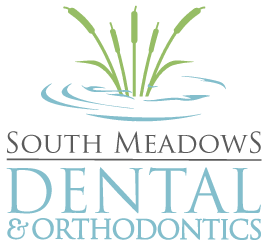Dental bridges are a fixed restoration created to replace a missing tooth. Bridges help restore functionality to the mouth and jaw, as well as serving a cosmetic function by restoring your full smile. By using dental bridges to replace a missing tooth (or teeth), this can prevent your teeth and jaw from shifting to compensate for the gap. It will also provide underlying support to lips, cheeks, and muscles. Bridges can be made from either gold, porcelain, metal, or all ceramic material. The ceramic option is made to look natural because the color will match your natural teeth for a hidden fix.
TYPES OF DENTAL BRIDGES
Each patient is different in what they want to achieve from their dental bridge, as well as how they want their bridge placed. There are a variety of options for dental bridges, including:
- Traditional: This is the most popular type of dental bridge. This bridge consists of at least one Pontic (fake tooth). This Pontic is held in place by dental crowns that are placed on the adjacent teeth. This can be used on any part of the mouth as long as there are healthy, natural teeth to anchor the bridge.
- Cantilever Bridges: These are another option for replacing missing teeth. This is a lot like the traditional bridge but, instead of the abutments being attached to both sides, they are only attached to one. This is sometimes as stable as a traditional bridge.
- Maryland Bridges: These are different than other traditional forms of bridges. These consist of a fake tooth that is held in place by either a metal or porcelain frame. This frame is bonded to the back of the two adjacent teeth.
- Implant-Supported Bridges: Instead of being supported by crowns or frames, this is supported by dental implants. An implant is placed for the missing tooth and holds the bridge in place. These are secure, comfortable, and act as natural teeth would.
HOW ARE DENTAL BRIDGES PLACED?
The placement of a dental bridge is performed over the course of two visits. During your first visit, your dentist will prepare the area for placement of the bridge. Local anesthesia will be used to reduce any potential discomfort during this visit. Your dentist will clean the teeth and prepare them for the crowns that will be used to hold the bridge in place. The teeth for the crowns will be shaped and reduced in size, and an impression will be taken so that a custom bridge can be created. This impression will be sent to a dental lab. During the interim time, you will wear a temporary bridge or crown to protect the prepared teeth. At the second visit, after your dentist has received the bridge, it will be placed and fitted. The bridge fit will be confirmed, and we will cement or bond it in place. During the first few days after bridge placement, you may experience an adjustment period with some sensitivity. This should not be more than what over-the-counter pain medication can manage. If there is any discomfort lasting more than a few days or doesn’t go away with painkillers, we should check the area.
Bridges can last for many, many years if taken care of properly. Our dental team will discuss care instructions for your bridge to make sure it’s clean and free from harmful substances such as plaque, tartar, or trapped food. It’s best to keep good dental hygiene practices as well as regular appointments with your dentist at South Meadows Dental & Orthodontics.
WHY DO I NEED A DENTAL BRIDGE?
At South Meadows Dental & Orthodontics, we have many patients who receive bridges. Some of the most common reasons patients require dental bridges include:
- Replace missing teeth
- Correct bite issues
- Prevent teeth from shifting
- Prevent jaw problems
- Improve appearance
Bridges help many patients enjoy a revived smile and effective mouth function. When a tooth (or multiple teeth) are missing, this can cause problems with a patient’s bite, jaw, and overall tooth structure. A dental bridge to replace the missing teeth can prevent the existing teeth from shifting or moving.
ARE YOU A GOOD CANDIDATE FOR A DENTAL BRIDGE?
To know if a dental bridge is the most effective treatment plan for you, talk with your dentist at South Meadows Dental & Orthodontics. Our dental team will do a thorough examination of the gap area and the adjacent teeth to see if they are able to support a bridge. During a consultation, your dentist will listen to your specific concerns and desires to see which type of bridge would be most beneficial for you.
SCHEDULE A CONSULTATION
Having missing teeth can be embarrassing and painful. Not only can missing teeth make you feel self-conscious, but they can also cause problems with the rest of your teeth and jaw. Avoid future concerns by getting a dental bridge with the help of our dental team. If you would like to know more about dental bridges, come into South Meadows Dental & Orthodontics for a consultation. To make an appointment, call our office or fill out an online form.
